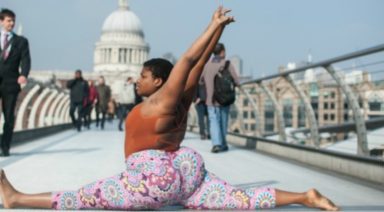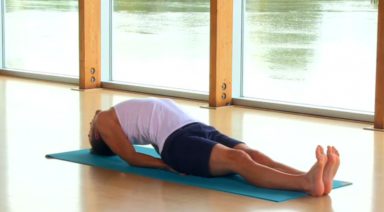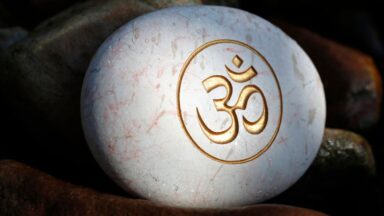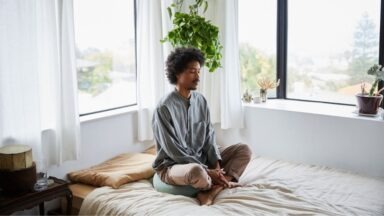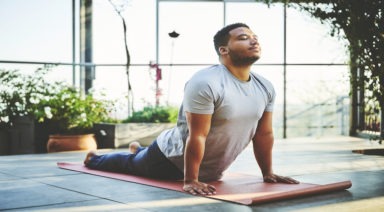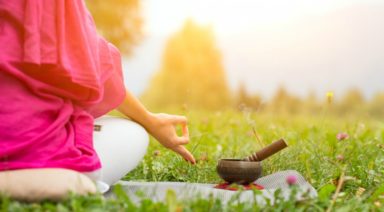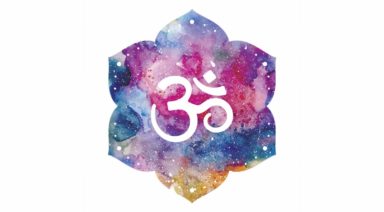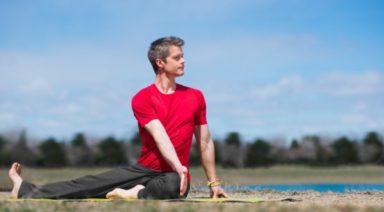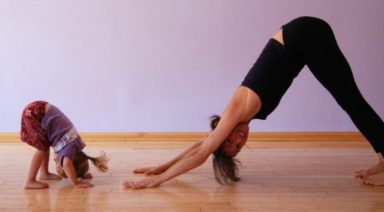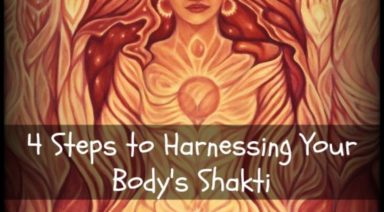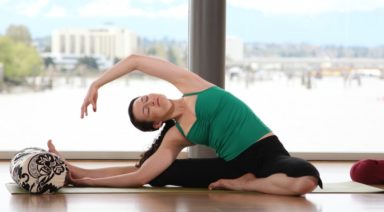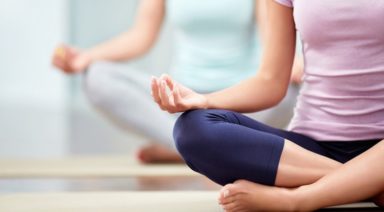Withdrawal of the Senses: Practicing Yoga Blindfolded
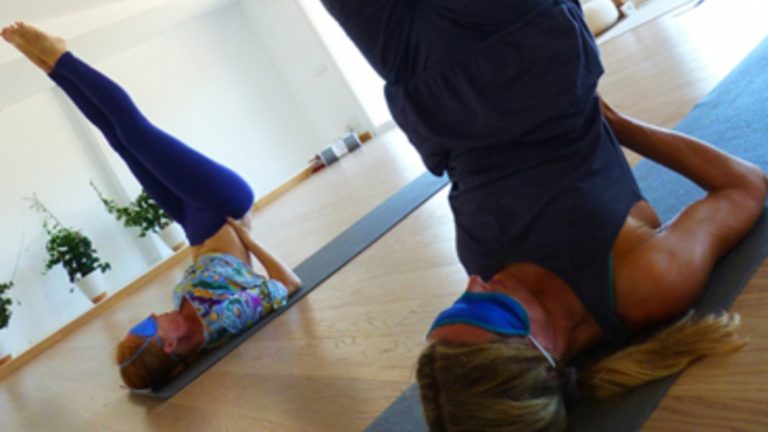
In yoga philosophy, Pratyahara – translated as removal of the senses, is designed to take us from the outside to the inside, a journey for the yogi to find the Self. How about removing your ability to see? It is one thing to close your eyes during a practice, yet to actually remove the choice of opening them is a completely different matter.
Practicing yoga with your eyes blindfolded has a huge impact on the rest of your senses. You’ll feel your balance being challenged as you remove visual references and you’ll also feel the rest of your senses become deepened and refined. Another benefit is a renewed sense of gratitude. We often take simple things—like our ability to appreciate beautiful images, light, movement and action through our eyesight—for granted.
Give it a go and see for yourself what benefits arise from the removal of one of your senses. With a scarf or sleep mask, cover your eyes. Take a moment to simply get accustomed to the idea of not having the choice to open your eyes during your practice. Allow for any feelings of anxiety or fear as you adapt to this big change. Calm any sense of panic by drawing your attention to your breath and feeling the solid earth beneath your feet. Feel the difference in the air, the space filling the room. Use the rest of your senses: hearing, taste, touch and smell, and remind yourself that you can always feel for the edges of your mat if you need to regain your bearings.
Practicing blindfolded is a time to take your asana practice a little slower and use a simpler sequence, in order to go deeper within. The present moment will be magnified and you will tune deeper into your breath, feeling and hearing the sensations of your body moving. You will notice that the need for focus and presence is much greater than usual. If your mind shifts or wanders at all from the present, you’ll feel lost. You may also recognize yourself seeking for external approval by checking what others are doing or looking for visual references. Use this as an opportunity to find approval from within yourself. After all, the purpose of the practice of yoga is to connect to your deeper self; to trust yourself and feel a sense of renewed confidence from within; to realize that the answers lie within.
Enjoy the experiment and use this as an exercise to adapt to change, to become more grateful for the smaller or invisible aspects of your life. Notice the qualities and attributes that arise during the practice and what effects you feel at the end. Take this as an opportunity to feel grateful for the simple things in life, the ability you have to see, to appreciate beauty.
The Magic of the Morning Ritual
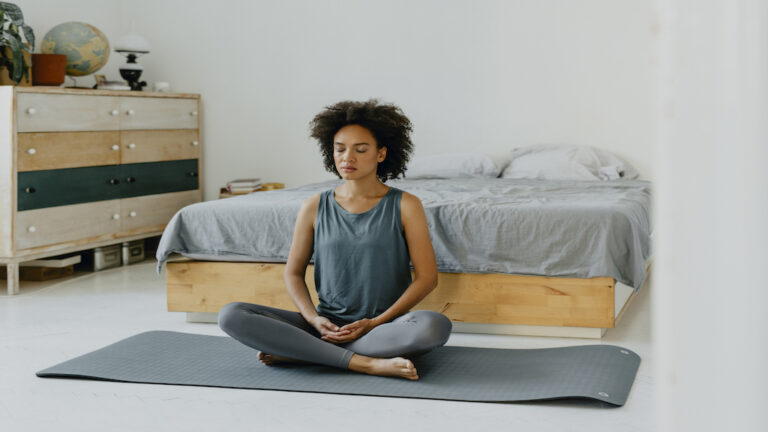
For years, science has backed the idea of a morning ritual. Neural pathways are the most malleable in these early hours of the morning. Creating a routine to prepare your mindset and body to support your day provides a well of resilience for the twists and turns of life. The ritual can change over time, be it meditation, movement, or breathwork. It’s the time of day that stays the same. The practice is about showing up for yourself.
We also see evidence in current cultures across the world, of a morning practice being passed down from the ancients. The mystics of India called this time of day, just before dawn, the Brahama Muhurta. They say it’s the most sacred time to align the inner cosmos with the outer.
For example, Ayurveda’s recommendation for easing depression is to walk outside and get sun in your eyes first thing in the morning. Science has confirmed that this helps reset the circadian rhythm with the biological clock and supports the vitality of several health-related topics, including a good night’s sleep.
So, there are plenty of reasons why a morning ritual is a great way to start the day. Perhaps the bigger question is…how?
Neuroscience continues to provide valuable information on building new, healthy habits and dissolving the less desirable ones. For starters, we don’t need to rely on sheer willpower. Atomic Habits author James Clear quotes Greek poet Archilochus:
“You do not rise to the level of your goals. You fall to the level of your systems.”




